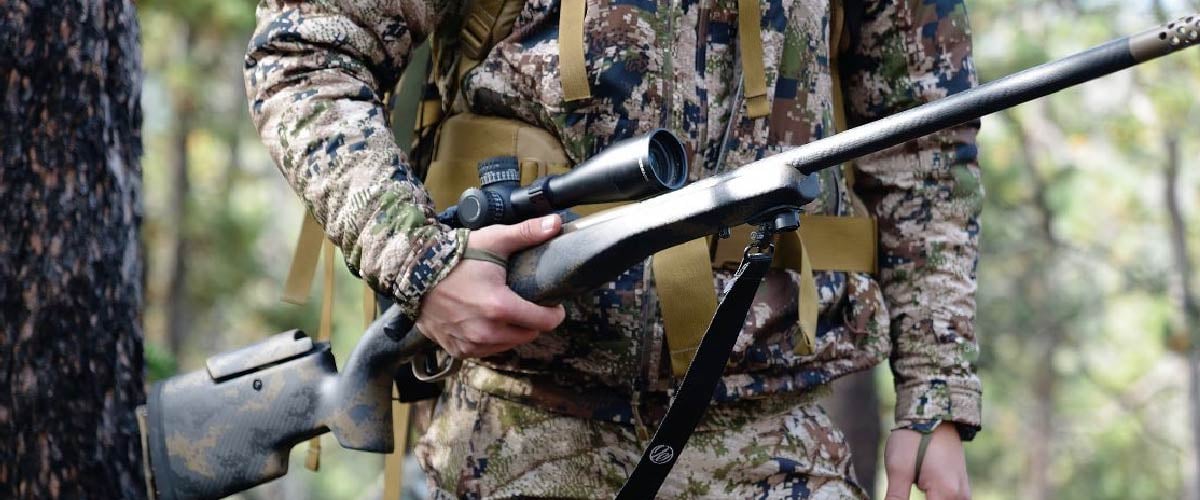Best Scope for 270 Winchester

The .270 Winchester has been around since 1925, and was originally made for the Model 54 rifle. Now, it has a much wider range of application and has become a popular round with hunters, especially those targeting larger game like elk, deer, and moose. This is a consistent, widely available caliber with a moderate recoil and strong ballistics.
Even a caliber like the .270 can only do you so much good if you have not invested in a high-quality scope. Your rifle scope can increase your ability and accuracy significantly by allowing you to see targets at longer distances and make adjustments to the bullet’s trajectory. This article will cover the specific features your rifle scope should have if you are pairing it with the .270 Winchester.
Magnification
If you are looking to take down big game without being noticed, you need a rifle scope so that you can shoot from the appropriate distance. For the .270, anything over 350 yards is considered long range; 150-250 yards is considered medium range; and under 150 yards is close range. This is a baseline, but of course these distances can vary based on the rifle you’re using, its barrel length, and of course, the ability of the shooter.
If you’re planning to shoot with the .270 Winchester at 500 yards, you’ll need a magnification of 8x and higher. If you are working in the medium range of 150-350, your scope will need 4-8x magnification. At close range of 150 yards and under, opt for a lower magnification of 3-5x.
It’s easy to think of big game as a big target. But you aren’t aiming for the entire animal; you are aiming for a specific point of the animal to ensure a clean, ethical kill. Even on the enormous elk, the vital area has just a 12” diameter. That’s bigger than a bulls eye, but you still need magnification to make sure you are minimizing pain to the animal and keeping yourself out of a potentially dangerous situation.
Remember that a higher magnification is not always better. Determine the distance you’ll actually be shooting, and select the appropriate magnification. If you’ll be shooting at a variety of distances, opt for a variable scope that allows you to change magnification levels based on the distance of your target.
Light Transmission
If you are shooting over 500 yards, you’ll want more powerful magnification of 8x or higher. The more magnification intensity, the more glass in the lens, and the less light comes through.
If you’ll be shooting in dim conditions, you’ll want a scope with a larger objective lens, like 40mm. The larger lens allows for more light to come through. However, this also means the scope as a whole is larger and heavier, which can get tiring through the course of a full day of hunting. Opt for a larger lens if you’ll be shooting long distances with high intensity magnification.
Another way to increase the light transmission of your scope is to get one that is labeled “fully multicoated.” This means that every piece of glass in your lens has received multiple layers of coat. This coat keeps your scope weatherproof, and increases the light transmission. You’ll see other marketing language like “coated,” “fully coated,” and “multicoated,” but these all have either fewer layers of coat or coat applied to fewer surfaces.
Eye Relief
The .270 Winchester has a softer recoil than many other calibers with its level of power, but it’s still important to consider the eye relief of your scope. This refers to the maximum distance you can hold your eye from the scope and still see the full image. It keeps your scope from knocking you in the eye when you fire your gun.
With the .270, you’ll still want a generous amount of eye relief, which is generally considered 3-3.5”. This also depends on the rifle you’re using; getting an eye relief of 4” or more is definitely safe.
In Conclusion…
When you’re buying a scope for any purpose, make sure to invest in one that is high quality, from a reliable manufacturer. It should be weatherproof, durable, and have reticles and turrets that allow you to make the necessary adjustments in the field. For the .270, use these guidelines to choose your scope based on the distances you intend to shoot.